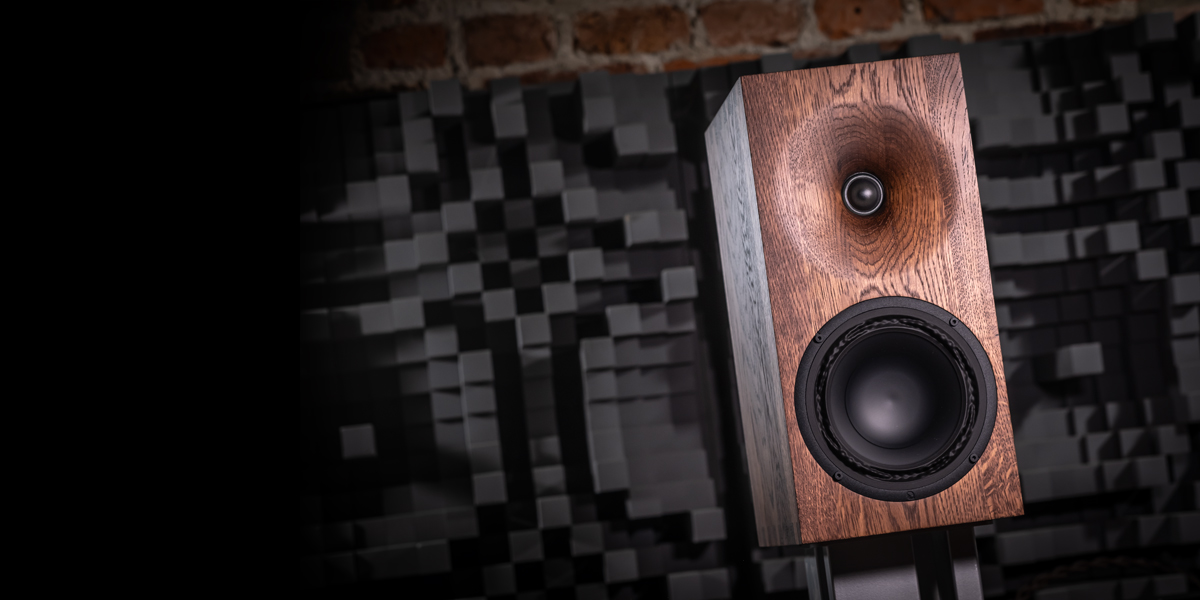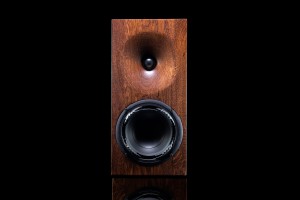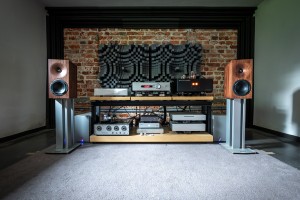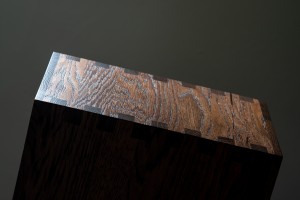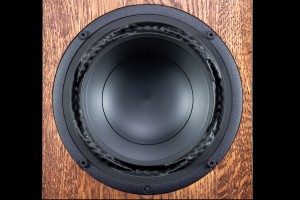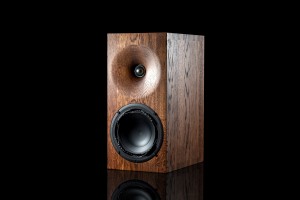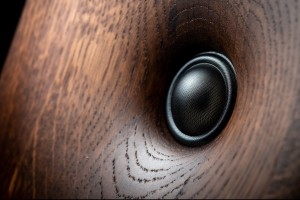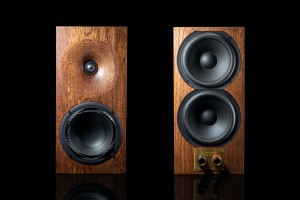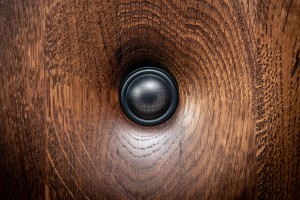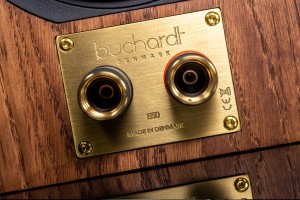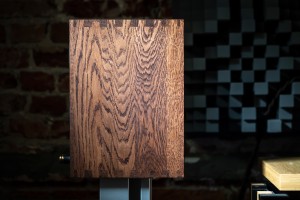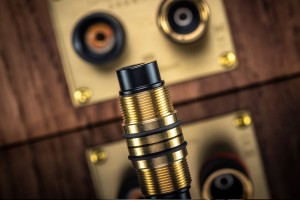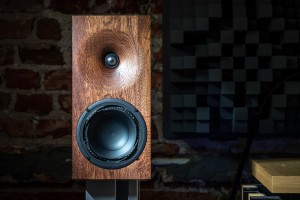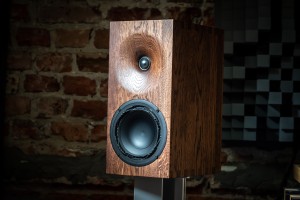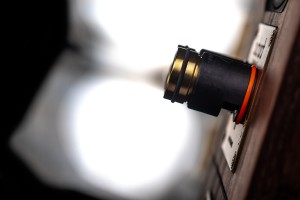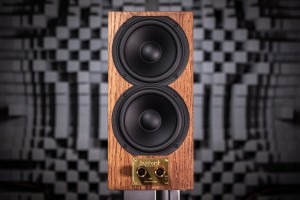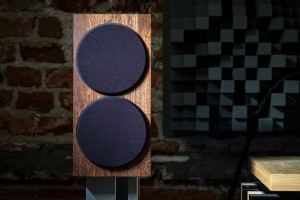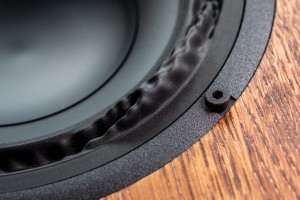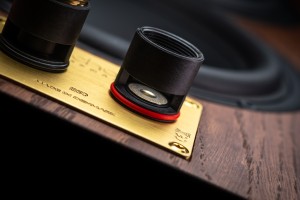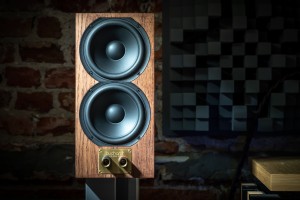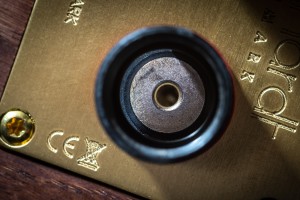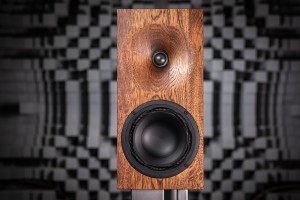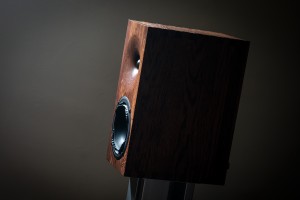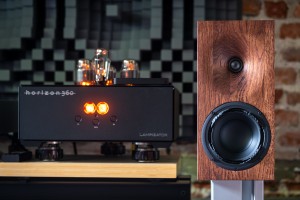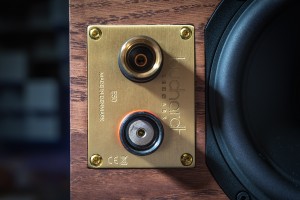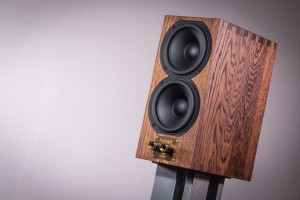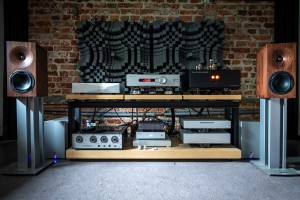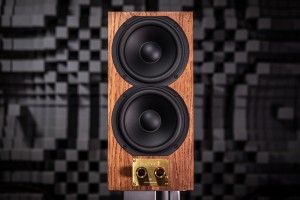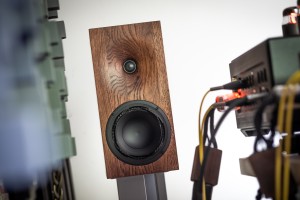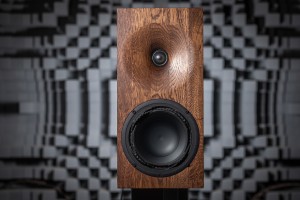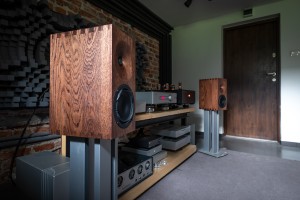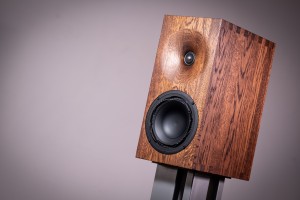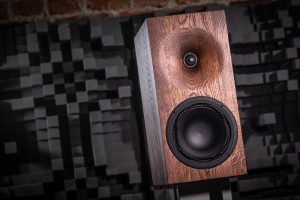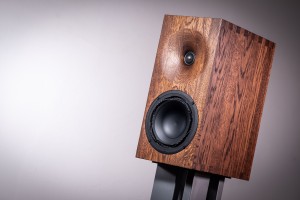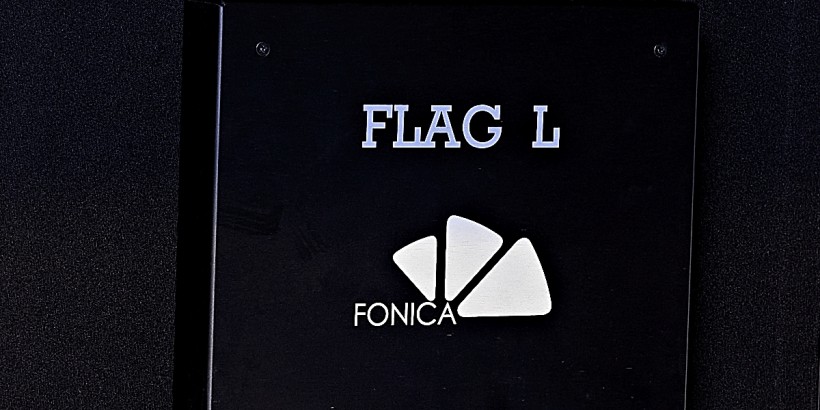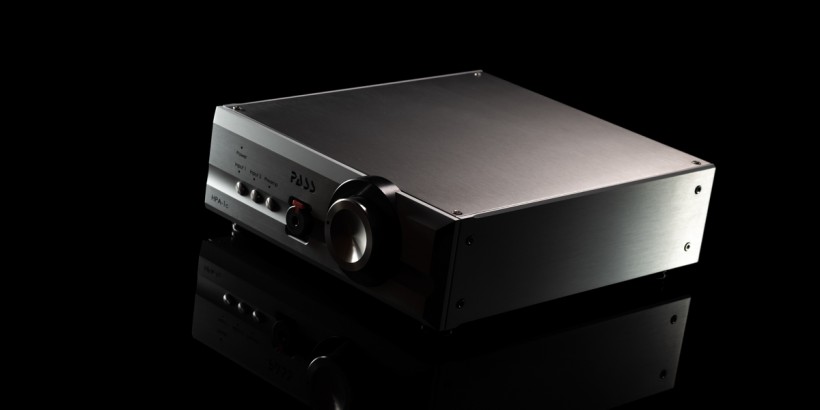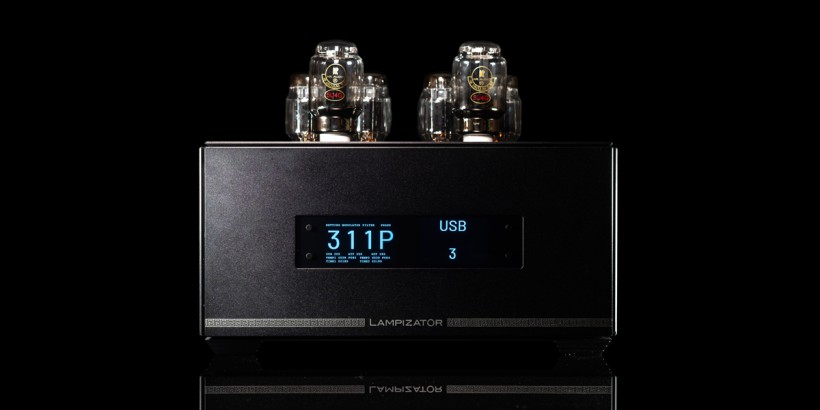Buchardt Audio E50 is its makers’ latest stand-mount two-way speaker that packs stuff usually found in much pricier products. Now let’s find out whether it performs accordingly. Enjoy!
Mad!
The most recent Buchardt Audio review published at this site dates back to late 2020. Nearly five years later this Danish audio house is still around and better than ever. To recap, it was established in 2013 in the city of Silkeborg by Mads Buchardt, a musician who, together with his childhood friend Kasper Raun, shared a passion for hi-fi and the idea of building their own loudspeaker. The latter’s engineering expertise eventually landed him the position at Dynaudio, where he was responsible i.e. for Xeo and Focus Xd ranges. The two Danes’ first design named S300 was ready in 2011. A proper brand for it was needed and that’s how two springs later Buchardt Audio came to be. This introductory speaker model scored a very successful debut that allowed Mads and his team to expand their roster, get in touch with the industry’s top-tier driver specialists and release one commercial hit after another over the course of the next 12 years. Luck wasn’t a factor here, on the contrary to the CEO’s business model that proved to be extremely effective.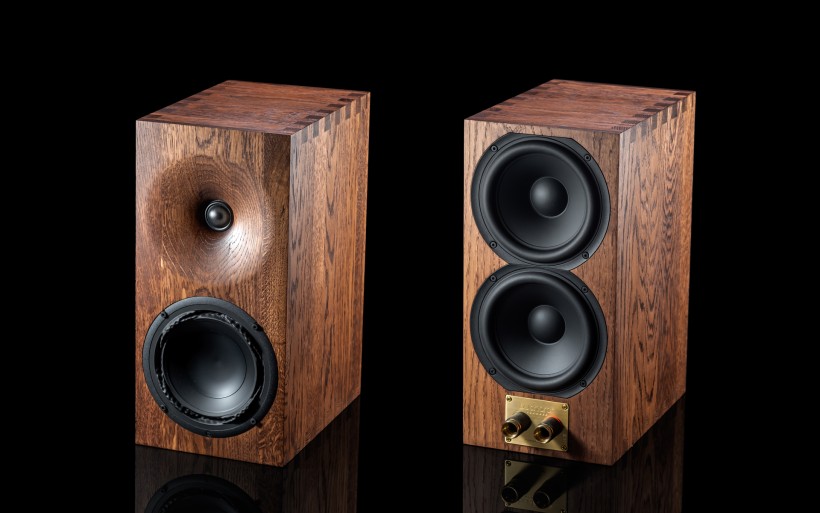 Audio manufacturers with aspirations to expand beyond their own country often rely on distributors and their resellers. These parties take care of clients, maintain contacts with the local press, participate in audio events, oversee marketing and also sort out warranty claims. Needless to say, a product’s retail price has to cover these services. Buchardt Audio never had that kind of network established and odds are it never will. It simply does too well by selling directly to the end user via the online store. While this business route may seem easy to follow, in reality it’s not. I’m aware of quite a few audio houses who initially pursued it, failed miserably and eventually embraced the distributor support that saved them from collapsing. Mads’ operation thrives without such assistance for four reasons. One, free worldwide shipping with all import duties and taxes included all across the roster is a massive attractor that speaks to customers’ convenience. Two, the company’s large-scale production allows it to negotiate very good deals for boutique costly parts that effectively raise the perceived value and performance of speakers with them on board. Three and four, the factory-direct sales MO makes Buchardt Audio stickers very competitive, so great sound quality for the money and above is the natural outcome. The manufacturer’s S400 and A500 monitors were terrific on that particular score.
Audio manufacturers with aspirations to expand beyond their own country often rely on distributors and their resellers. These parties take care of clients, maintain contacts with the local press, participate in audio events, oversee marketing and also sort out warranty claims. Needless to say, a product’s retail price has to cover these services. Buchardt Audio never had that kind of network established and odds are it never will. It simply does too well by selling directly to the end user via the online store. While this business route may seem easy to follow, in reality it’s not. I’m aware of quite a few audio houses who initially pursued it, failed miserably and eventually embraced the distributor support that saved them from collapsing. Mads’ operation thrives without such assistance for four reasons. One, free worldwide shipping with all import duties and taxes included all across the roster is a massive attractor that speaks to customers’ convenience. Two, the company’s large-scale production allows it to negotiate very good deals for boutique costly parts that effectively raise the perceived value and performance of speakers with them on board. Three and four, the factory-direct sales MO makes Buchardt Audio stickers very competitive, so great sound quality for the money and above is the natural outcome. The manufacturer’s S400 and A500 monitors were terrific on that particular score.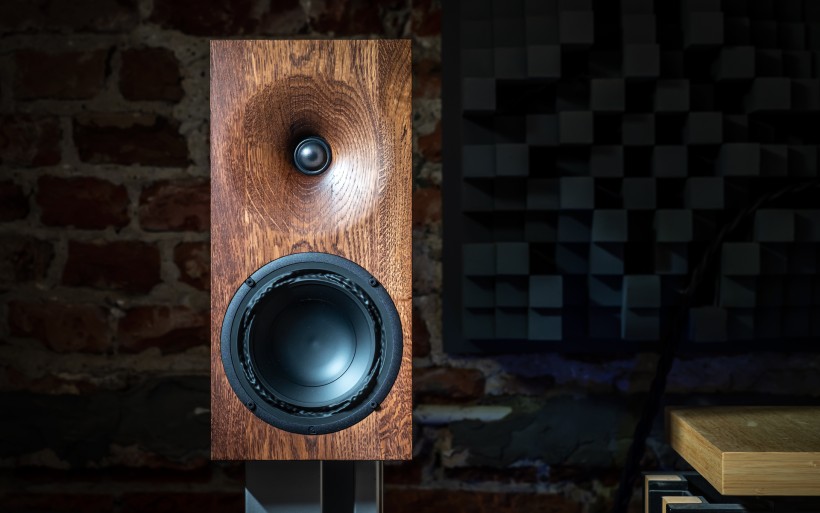 While streamlined buttoned-up logistics, kosher components and generous price-to-performance ratio are Mads Buchardt’s secret sauce, Danish origin is on the ingredient list, too. On that note, recently he and his team moved into their brand new 1’050m2 facility with all the machinery necessary to keep the entire production in house. The current lineup’s active division comprises Anniversary 10 monitors, A700 LE floorstanders and SUB10 subwoofer, while the passive branch holds stand-mount designs P300, S400 MKII and the latest E50 that is our subject this time around. Priced at €3’950/pr, this unique speaker set determines the manufacturer’s current performance ceiling in its class. It also answers the question of what happens when Mads decides to go really fancy on parts while remaining in the financially sane ballpark as per usual. I can tell you as early as now that in that sense Buchardt Audio E50 punches significantly above its retail price.
While streamlined buttoned-up logistics, kosher components and generous price-to-performance ratio are Mads Buchardt’s secret sauce, Danish origin is on the ingredient list, too. On that note, recently he and his team moved into their brand new 1’050m2 facility with all the machinery necessary to keep the entire production in house. The current lineup’s active division comprises Anniversary 10 monitors, A700 LE floorstanders and SUB10 subwoofer, while the passive branch holds stand-mount designs P300, S400 MKII and the latest E50 that is our subject this time around. Priced at €3’950/pr, this unique speaker set determines the manufacturer’s current performance ceiling in its class. It also answers the question of what happens when Mads decides to go really fancy on parts while remaining in the financially sane ballpark as per usual. I can tell you as early as now that in that sense Buchardt Audio E50 punches significantly above its retail price. A large cardboard delivered to my doorstep housed two thick foam forms that locked into place both speakers in their linen bags. Four magnetized black grilles were in the box, too. Buchardt Audio E50 is a passive stand-mount two-way design that measures (H x W x D) 395 x 190 x 284mm and shows 8.6kg on the scale. The on-site specs list 85dB sensitivity, 36Hz – 30kHz (+/-3dB) frequency response, 2’000Hz crossover point and 6Ω nominal impedance with 4.9Ω being the lowest dip at 160Hz, so nothing unusual considering the E50’s pedigree and compact footprint. There’s far more to this newcomer that meets the eye, however. While passive radiators are costlier than bass-reflex tunnels, arguably more difficult to implement and nowhere near as popular as they should be, at Buchardt Audio they’re cherished. Even the most affordable speaker in this portfolio incorporates them. Two such membranes on the E50’s back allowed team Buchardt to shrink the enclosure size by 30% in comparison to a regularly vented alternative with similar bass output, avoid port resonances, improve in-room behavior and extend bass reach. Those are big practical wins all around and we’ll get to them shortly.
A large cardboard delivered to my doorstep housed two thick foam forms that locked into place both speakers in their linen bags. Four magnetized black grilles were in the box, too. Buchardt Audio E50 is a passive stand-mount two-way design that measures (H x W x D) 395 x 190 x 284mm and shows 8.6kg on the scale. The on-site specs list 85dB sensitivity, 36Hz – 30kHz (+/-3dB) frequency response, 2’000Hz crossover point and 6Ω nominal impedance with 4.9Ω being the lowest dip at 160Hz, so nothing unusual considering the E50’s pedigree and compact footprint. There’s far more to this newcomer that meets the eye, however. While passive radiators are costlier than bass-reflex tunnels, arguably more difficult to implement and nowhere near as popular as they should be, at Buchardt Audio they’re cherished. Even the most affordable speaker in this portfolio incorporates them. Two such membranes on the E50’s back allowed team Buchardt to shrink the enclosure size by 30% in comparison to a regularly vented alternative with similar bass output, avoid port resonances, improve in-room behavior and extend bass reach. Those are big practical wins all around and we’ll get to them shortly.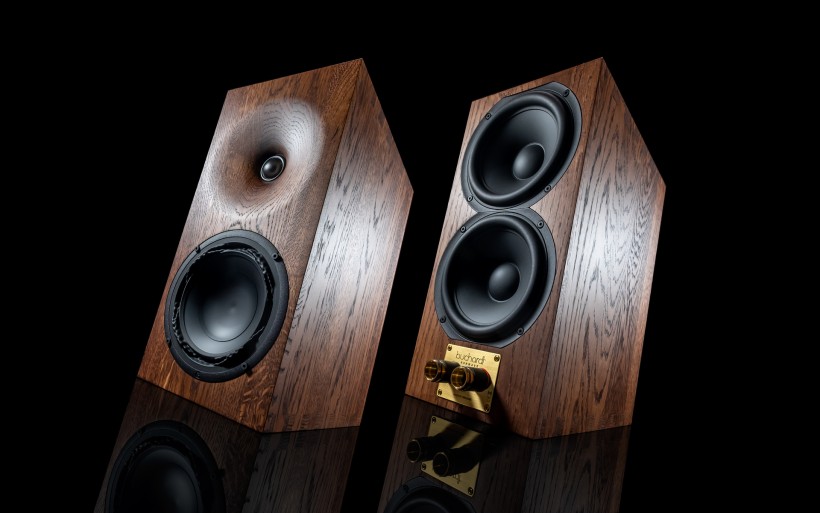 Buchardt Audio’s active A10 aside, their E50 is their first passive design that rocks solid oak wood enclosures. I couldn’t tell. On machining and fit ‘n’ finish these cabinets are as expertly executed as it gets. Finger joints, tight tolerances and attention to detail atop awesome wooden aesthetic left no room to complain. The E50 is available either with straight or rounded edges and in four different finishes. The base price gets us stained black variant, charcoal is €50 extra and natural/smoked oak add €150 to the bill. The 28mm-thick front baffle accommodates a CNC-milled waveguide that’s been optimized to minimize the tweeter’s edge diffractions and match its directivity to the midwoofer, so that its off-axis performance is consistent around the crossover frequency. This short horn also boosts the tweeter’s low-frequency output, which lowers its workload and distortion, and allows for its wide propagation that gradually narrows at the highest frequencies. The driver in discussion is Scan-Speak’s well-known and praised D2905/970000 28mm textile-dome type, here customized for waveguide loading. Purifi 6.5” Ushindi PTT6.5X is Danes’ midwoofer of choice that boasts very high output level at minimal distortion. It also sells for about €400 a pop.
Buchardt Audio’s active A10 aside, their E50 is their first passive design that rocks solid oak wood enclosures. I couldn’t tell. On machining and fit ‘n’ finish these cabinets are as expertly executed as it gets. Finger joints, tight tolerances and attention to detail atop awesome wooden aesthetic left no room to complain. The E50 is available either with straight or rounded edges and in four different finishes. The base price gets us stained black variant, charcoal is €50 extra and natural/smoked oak add €150 to the bill. The 28mm-thick front baffle accommodates a CNC-milled waveguide that’s been optimized to minimize the tweeter’s edge diffractions and match its directivity to the midwoofer, so that its off-axis performance is consistent around the crossover frequency. This short horn also boosts the tweeter’s low-frequency output, which lowers its workload and distortion, and allows for its wide propagation that gradually narrows at the highest frequencies. The driver in discussion is Scan-Speak’s well-known and praised D2905/970000 28mm textile-dome type, here customized for waveguide loading. Purifi 6.5” Ushindi PTT6.5X is Danes’ midwoofer of choice that boasts very high output level at minimal distortion. It also sells for about €400 a pop.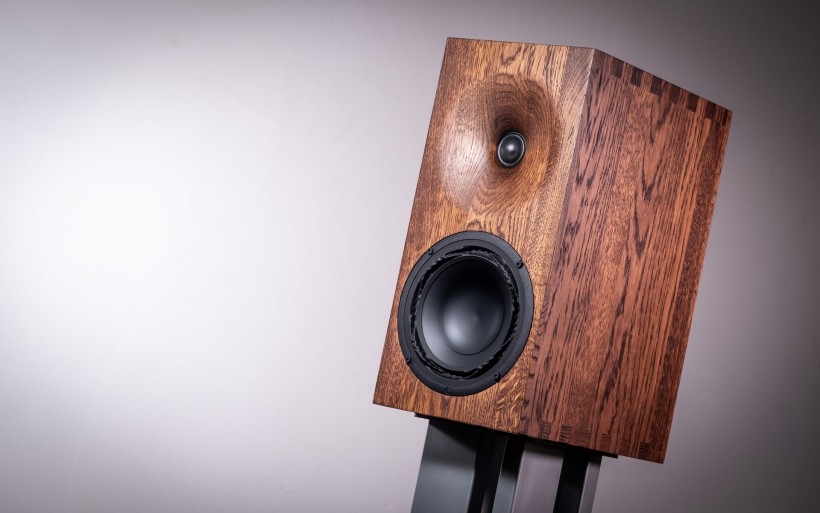 Seeing that kind of artillery in today’s price bracket is a sight to behold, but we’re not done just yet. Twin SB Acoustics passive radiators on the E50’s rear also have been customized specifically for this speaker. Their 28mm stroke distance and 58g cone mass were necessary to keep up with the enormous output of Purifi drivers. The binding posts just below the passive membranes aren’t usual either, the local high-end cable company Argento Audio authored these iron-free beauties for Buchard’s special projects. Thus far the list includes only S400 Signature and E50. The core channel of these terminals is made of silver, all connection types are invited and large brass locking bolts are very convenient to use. I bet that many far pricier speakers would like to feature something like that on the back. The internal damping scheme includes natural wool, polyester wadding, Basotect acoustic foam and scattering patterns milled directly on the cabinet panels. The midwoofer sees the 1st-order high-pass slope built exclusively upon monstrous 14AWG copper-foil inductors from the Cross-Coil range. The tweeter connects to the 3rd-order low-pass network comprised of the same company’s Superior Z-Caps, Cross-Caps, Superes 1% resistors and Air-Core wire inductors. Lastly, Jantzen Audio 13AWG OFC and Duelund Cotton-in-Oil tinned copper runs make the internal wiring for the midwoofer and tweeter respectively. Considering all this, Buchardt Audio E50 is the work of a true passionate and I think that many enthusiasts who know a thing or two about top-shelf parts will see it as such. Now it’s time to take it for a spin.
Seeing that kind of artillery in today’s price bracket is a sight to behold, but we’re not done just yet. Twin SB Acoustics passive radiators on the E50’s rear also have been customized specifically for this speaker. Their 28mm stroke distance and 58g cone mass were necessary to keep up with the enormous output of Purifi drivers. The binding posts just below the passive membranes aren’t usual either, the local high-end cable company Argento Audio authored these iron-free beauties for Buchard’s special projects. Thus far the list includes only S400 Signature and E50. The core channel of these terminals is made of silver, all connection types are invited and large brass locking bolts are very convenient to use. I bet that many far pricier speakers would like to feature something like that on the back. The internal damping scheme includes natural wool, polyester wadding, Basotect acoustic foam and scattering patterns milled directly on the cabinet panels. The midwoofer sees the 1st-order high-pass slope built exclusively upon monstrous 14AWG copper-foil inductors from the Cross-Coil range. The tweeter connects to the 3rd-order low-pass network comprised of the same company’s Superior Z-Caps, Cross-Caps, Superes 1% resistors and Air-Core wire inductors. Lastly, Jantzen Audio 13AWG OFC and Duelund Cotton-in-Oil tinned copper runs make the internal wiring for the midwoofer and tweeter respectively. Considering all this, Buchardt Audio E50 is the work of a true passionate and I think that many enthusiasts who know a thing or two about top-shelf parts will see it as such. Now it’s time to take it for a spin.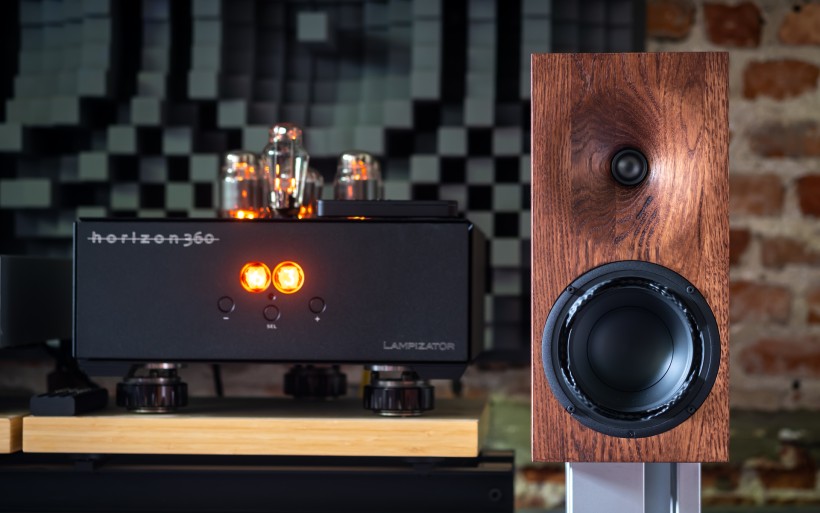 My setup for the E50 loaner comprised the Innous Statement Next-Gen server/streamer, Lampizator Horizon360 DAC and Trilogy 915R/995R analog set. The two other amps I had at my disposal – FirstWatt F7 and Enleum AMP-23R – were off the table due to their insufficient power output. The E50 was delivered without stands, so I used my trusty ol’ Soundstyle Z1 and three LessLoss Giant Steps pucks between each speaker and its base. sound|kaos Vox 3afw monitors on Vibra 68 footers were the natural sparring partner for the Danish set. While ported designs are usually troublemakers in my 22m2 listening room with low ceiling, those without any bores integrate with it easier when positioned right. Then we get to hear their direct output more than waves bouncing off the nearby walls, which effectively avoids spatial confusion and blur as the byproducts of timing issues. That gets us a significantly better performance in return. Speakers armed with rear-firing cones are ace on that front and enjoyably predictable, so mapping where Buchardt Audio E50 should and shouldn’t stand didn’t take long.
My setup for the E50 loaner comprised the Innous Statement Next-Gen server/streamer, Lampizator Horizon360 DAC and Trilogy 915R/995R analog set. The two other amps I had at my disposal – FirstWatt F7 and Enleum AMP-23R – were off the table due to their insufficient power output. The E50 was delivered without stands, so I used my trusty ol’ Soundstyle Z1 and three LessLoss Giant Steps pucks between each speaker and its base. sound|kaos Vox 3afw monitors on Vibra 68 footers were the natural sparring partner for the Danish set. While ported designs are usually troublemakers in my 22m2 listening room with low ceiling, those without any bores integrate with it easier when positioned right. Then we get to hear their direct output more than waves bouncing off the nearby walls, which effectively avoids spatial confusion and blur as the byproducts of timing issues. That gets us a significantly better performance in return. Speakers armed with rear-firing cones are ace on that front and enjoyably predictable, so mapping where Buchardt Audio E50 should and shouldn’t stand didn’t take long. In small listening rooms like mine, the positioning of speakers such as E50 is a careful balancing act. Their rear passive cones enjoy coupling with the front wall that effectively extends their bass output, but insufficiently deep and not particularly enveloping imaging perspective that steals from immersion is the price to pay. Conversely, moving such speakers away from that surface elevates their spatial presence and imaging depth, albeit at a cost of shallower and weaker bass. Our individual preferences and listening conditions determine the compromise between spatial layering and downstairs reach. Some monitors are perfectly happy with lots of space around them, some need the front wall assistance to work at their best. On top of that, some drivers have it easier as far as all imaging-related tasks are concerned. Full-range and coaxial transducers are brilliant in this regard due to their inherent point-source propagation. sound|kaos Vox 3afw monitors positioned nearly in the middle of my room and very close to the listening seat make that point very well. When used like so, these Swiss petites fully vanish from sight and cast a very much headphone-like spatial bubble packed with sound sources that on articulation, clarity, intimacy, directness and lifelike feel are second to none by my standards. As aggressively toed in as they are in such a use case scenario, Vox monitors also have their rear ports conveniently aimed at side walls which naturally reinforce their bass. A spatially fiendish compact speaker that doesn’t disappoint downstairs is the exceptional outcome.
In small listening rooms like mine, the positioning of speakers such as E50 is a careful balancing act. Their rear passive cones enjoy coupling with the front wall that effectively extends their bass output, but insufficiently deep and not particularly enveloping imaging perspective that steals from immersion is the price to pay. Conversely, moving such speakers away from that surface elevates their spatial presence and imaging depth, albeit at a cost of shallower and weaker bass. Our individual preferences and listening conditions determine the compromise between spatial layering and downstairs reach. Some monitors are perfectly happy with lots of space around them, some need the front wall assistance to work at their best. On top of that, some drivers have it easier as far as all imaging-related tasks are concerned. Full-range and coaxial transducers are brilliant in this regard due to their inherent point-source propagation. sound|kaos Vox 3afw monitors positioned nearly in the middle of my room and very close to the listening seat make that point very well. When used like so, these Swiss petites fully vanish from sight and cast a very much headphone-like spatial bubble packed with sound sources that on articulation, clarity, intimacy, directness and lifelike feel are second to none by my standards. As aggressively toed in as they are in such a use case scenario, Vox monitors also have their rear ports conveniently aimed at side walls which naturally reinforce their bass. A spatially fiendish compact speaker that doesn’t disappoint downstairs is the exceptional outcome. With that lay of the land, we can now move onto Buchardt Audio E50. When positioned some half a meter away from the front wall, this was an instant overkill on bass. Considering the above, this was good news. The clearly necessary additional distance between that surface and E50 promised a major hike in its spatial depth. A meter and a half atop gentle toe in got me where I wanted. Some speakers with rear-firing passive radiators luster for wall coupling in my room, here i.e. Gradient 6.2 floorstanders come to mind. Buchardt Audio E50 did not. Even without such support it introduced itself as a well-anchored hefty performer no less, which some folks may read as a politically correct way of describing a speaker that’s overdone on bass. Not the case. A large moving area on the E50’s back prevented that and effectively primed it for launching well-defined hard slaps with unquestionable ease. Feisty tracks auditioned at party-level volume communicated that more than well. While today’s subject engaged the high-RPM gear when needed, dug remarkably deep and remained composed no matter what, relaxation, copperish hues, juiciness, spatial boldness, thick outlines, softness and sensuality made its core voicing. In short, this was one playful fatigue-free speaker to listen to.
With that lay of the land, we can now move onto Buchardt Audio E50. When positioned some half a meter away from the front wall, this was an instant overkill on bass. Considering the above, this was good news. The clearly necessary additional distance between that surface and E50 promised a major hike in its spatial depth. A meter and a half atop gentle toe in got me where I wanted. Some speakers with rear-firing passive radiators luster for wall coupling in my room, here i.e. Gradient 6.2 floorstanders come to mind. Buchardt Audio E50 did not. Even without such support it introduced itself as a well-anchored hefty performer no less, which some folks may read as a politically correct way of describing a speaker that’s overdone on bass. Not the case. A large moving area on the E50’s back prevented that and effectively primed it for launching well-defined hard slaps with unquestionable ease. Feisty tracks auditioned at party-level volume communicated that more than well. While today’s subject engaged the high-RPM gear when needed, dug remarkably deep and remained composed no matter what, relaxation, copperish hues, juiciness, spatial boldness, thick outlines, softness and sensuality made its core voicing. In short, this was one playful fatigue-free speaker to listen to.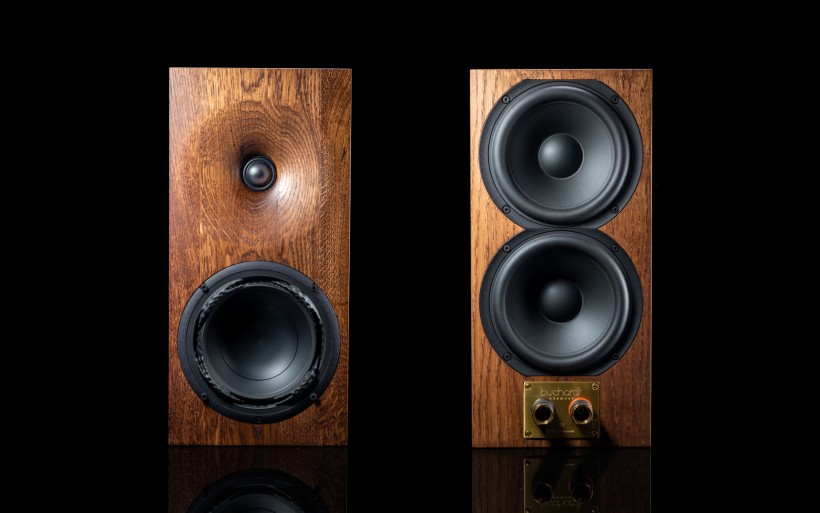 That kind of psych profile is only natural when bass is the foundational force that drives all else, but my system contributed to the E50’s atmospheric sound, too. Trilogy 995Rs’ fairly high output impedance meant that their control over the Danish speaker set was rather low, which largely explains its playful character as observed. Monitors such as this one fancy high damping and output power. Trilogy monos provided only the latter. Meanwhile, most class-D amps would cover both bases, so seem to be the golden ticket for today’s load. I’m certain that with such hardware nearby it’d sound leaner, even quicker, more contoured, oxygenated, radiant and sportier. Neither I had craves for that nor reasons to complain, however. In my system the E50 did very well on detail retrieval, imaging precision and complexity, instrumental and vocal eloquence, tactility, treble provision, spatial boldness and vividness. While its thick core may suggest otherwise, it didn’t sound stale or murky in the slightest. While I appreciated how relaxed and effortless it was for the most part, the way how it tapped into the seemingly endless power reserve and stiffened its suspension on naughty tracks impressed even more. When the usual signs of struggle don’t register, big ballsy effortless sound pulled from a compact handsome monitor has that effect. While that was a major perk on its own right, the Dane’s ability to instantly change the pace and mood as per music on the menu, and do so in style each time around, was its strongest asset.
That kind of psych profile is only natural when bass is the foundational force that drives all else, but my system contributed to the E50’s atmospheric sound, too. Trilogy 995Rs’ fairly high output impedance meant that their control over the Danish speaker set was rather low, which largely explains its playful character as observed. Monitors such as this one fancy high damping and output power. Trilogy monos provided only the latter. Meanwhile, most class-D amps would cover both bases, so seem to be the golden ticket for today’s load. I’m certain that with such hardware nearby it’d sound leaner, even quicker, more contoured, oxygenated, radiant and sportier. Neither I had craves for that nor reasons to complain, however. In my system the E50 did very well on detail retrieval, imaging precision and complexity, instrumental and vocal eloquence, tactility, treble provision, spatial boldness and vividness. While its thick core may suggest otherwise, it didn’t sound stale or murky in the slightest. While I appreciated how relaxed and effortless it was for the most part, the way how it tapped into the seemingly endless power reserve and stiffened its suspension on naughty tracks impressed even more. When the usual signs of struggle don’t register, big ballsy effortless sound pulled from a compact handsome monitor has that effect. While that was a major perk on its own right, the Dane’s ability to instantly change the pace and mood as per music on the menu, and do so in style each time around, was its strongest asset. After several days spent exclusively with the E50, rounds against the Vox were in order. It’s accurate to say that these two speaker sets had nothing in common. While admirable on bass considering its tiny footprint, the Swiss was nowhere near as ripped, grounded, majestic and deep as the Dane in this regard. That alone had a major impact on how their individual profiles were perceived. As per usual, the former was predominantly lean, quick, shiny, illuminated, precise, fresh, insightful, nimble and spatially surrounding. The latter was fair bit calmer, more voluptuous, cloudier, tonally warmer, denser, earthlier and imaging-wise not quite as deep and meticulous in its delivery. Chalk and cheese as they say and predictable outcome at that. This comparison only shows that competing with full-range drivers on their turf is anything but easy, let alone outclassing them. I just don’t see how any conventional monitor could beat the Vox on spatial stuff, I really don’t. While landing such a feat would require an even more sophisticated widebander, that doesn’t diminish what the E50 managed to accomplish. At the end of the day, this is a very approachable, finessed and artfully tuned speaker that performs on a very high overall level. Considering how brilliantly it portrays the sensation of scale, might and shove particularly on heavy and acoustic music, I think that most listeners will find it thoroughly entertaining and positively surprising. Let’s wrap.
After several days spent exclusively with the E50, rounds against the Vox were in order. It’s accurate to say that these two speaker sets had nothing in common. While admirable on bass considering its tiny footprint, the Swiss was nowhere near as ripped, grounded, majestic and deep as the Dane in this regard. That alone had a major impact on how their individual profiles were perceived. As per usual, the former was predominantly lean, quick, shiny, illuminated, precise, fresh, insightful, nimble and spatially surrounding. The latter was fair bit calmer, more voluptuous, cloudier, tonally warmer, denser, earthlier and imaging-wise not quite as deep and meticulous in its delivery. Chalk and cheese as they say and predictable outcome at that. This comparison only shows that competing with full-range drivers on their turf is anything but easy, let alone outclassing them. I just don’t see how any conventional monitor could beat the Vox on spatial stuff, I really don’t. While landing such a feat would require an even more sophisticated widebander, that doesn’t diminish what the E50 managed to accomplish. At the end of the day, this is a very approachable, finessed and artfully tuned speaker that performs on a very high overall level. Considering how brilliantly it portrays the sensation of scale, might and shove particularly on heavy and acoustic music, I think that most listeners will find it thoroughly entertaining and positively surprising. Let’s wrap.
The two Buchardt Audio designs I’ve reviewed in the past were primarily aimed at regular consumers looking for reasonably priced high-performance speakers. While the company’s E50 also fits this profile, its exemplary build quality, posh oaken exterior, top-shelf components and great sonics will attract the attention of seasoned audiophiles as well. Most importantly however, it sells for significantly less than what we’d expect from such a product yet feels like a luxurious statement that acts accordingly on the most relevant count. That’s my takeaway. Props to Mads & Co. for landing this awesome speaker set and showing us how much can really be done in its price range.
Associated Equipment:
- Amplifier: Trilogy 995R, FirstWatt F7, Enleum AMP-23R
- DAC: LampizatOr Horizon360 (Stradi 5U4G + Psvane Art TIII 4x KT88 / 2x 6SN7)
- Speakers: Boenicke Audio W11 SE+, sound|kaos Vox 3afw
- Transport: Innuos Statement, fidata HFAS1-S10U
- Preamplifier: Trilogy 915R, Thöress DFP
- Speaker cables: Boenicke Audio S3, LessLoss C-MARC
- Headphones: HifiMan Susvara
- Speaker signal conditioning: LessLoss Firewall for Loudspeakers, Boenicke ComDev
- Anti-vibration conditioning: 6x Carbide Base Diamond (under streamer), 6x Carbide Base Micro Diamond with TwinDamp inserts and spikes (under DAC and pre), Vibra 68 (under speakers), 12x LessLoss Giant Steps (under streamer, DAC and pre)
- Interconnects: LessLoss Entropic Process C-MARC, Boenicke Audio IC3 CG
- Power components: Gigawatt PC-3 SE EVO+/LC-3 EVO, LessLoss C-MARC, LessLoss Entropic C-MARC, LessLoss Stellar C-MARC, LessLoss Power Distributor into Boenicke Audio Power Gate, ISOL-8 Prometheus
- USB components: AudioPhonique Desire USB
- Rack: Franc Audio Accesories Wood Block Rack 1+3
- Network: Fidelizer EtherStream, Linksys WRT160N
- Music: NativeDSD
Retail prices of reviewed components in EU (incl. VAT):
- Buchardt Audio E50 (stained black): €3’950
- Buchardt Audio E50 (charcoal): €4’000
- Buchardt Audio E50 (natural/smoked oak): €4’100
Manufacturer: Buchardt Audio


